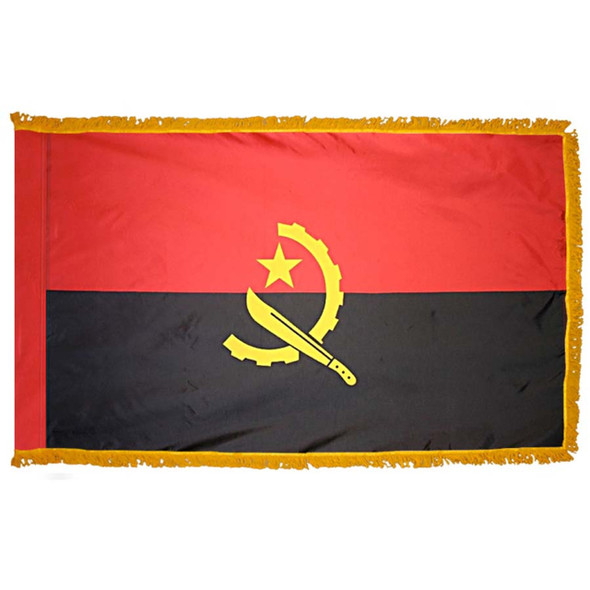Description
Celebrate Angola’s independence with an Angola national flag! This flag is ideal for celebrating Angolan culture and heritage, as a focal point at events, or for use at homes or government buildings.
Our Angolan flag is made of nylon, a quick-drying material that helps prevent mildew buildup. The design uses a heat-resistant digital print, meaning the colors are UV-resistant, even under direct sunlight. This flag is equipped with a sturdy canvas header and brass grommets for use with an outdoor flagpole.
Angola Flag Features
- Proudly manufactured in America
- Official 1975 design
- 100% durable nylon material
- Strong white canvas heading
- Rust-resistant brass grommets
Looking for the more formal version of this flag? Check out our Angola flag finished with gold fringe.
Angola Flag Meaning & History
The flag of Angola was adopted on November 11, 1975, the same day the nation declared independence from Portugal. The design was created by Henrique Onambwé, who served as the country’s Minister of Industry, and was based on the flag used by the Popular Movement for the Liberation of Angola. This political group fought the Portuguese during the war for independence and today is the ruling party in the Angolan government.
According to the Constitution of Angola, the red stripe represents the bloodshed of Angola’s struggle against colonialism, and the black stripe symbolizes Africa. The emblem of the half-gear wheel stands for factory workers and industrialization, the machete is for agricultural workers, and the gold star is for international solidarity and the country’s wealth.
Other Details
Language(s): Portuguese
Currency: Kwanza€
Government: Unitary Dominant-Party Presidential Republic
Flag Meaning: The red represents the blood of Angolans shed during times of fighting for freedom and defense and the black represents Africa. The emblem's cogwheel represents the laborers and industrial production; the machete symbolizes peasants, agricultural production, and the country's armed struggle; the star stands for the international solidarity and progress; and the yellow color represents the affluence of Angola.







